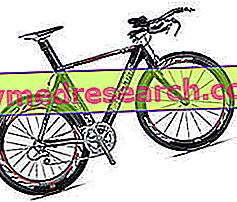By Dr. Stefano Casali
The role of the equipment
It is certainly true that, if the pursuit of performance is the primary objective that athletes and technicians pursue, technological research in the field of sports equipment has also focused on the development of tools and garments that minimize the possibility of injuries to the musculoskeletal system; hence the importance for the coach to know the characteristics of the tools to be able to direct the athlete towards the choice that best suits his specific needs. Even in the world of sport, as in other fields, in the last two decades there has been a remarkable development of technologies at the athlete's service, aimed both at optimizing the performance in the race and making training more effective and profitable.

Training shoes
For some athletes, footwear is the only tool to perform performance, such as in many athletics disciplines, and in this case there is a precise type for each specialty, but practically everyone uses the training shoe when preparing for appointments scheduled competitions. The combination of training shoes of the last three decades with the current ones clearly reveals how the shoe has evolved, both for the design and the materials used and for what concerns the design philosophy that is currently influenced by the biomechanical studies that took place. followed over the past few years. From a shoe with a rather simple design with an all-leather upper produced in the 60s, we moved on to the one with a synthetic leather upper and spoiler over the heel that was in vogue in the 70s, until we arrived in the following decade to build models with uppers in nylon, a material that has made it possible to obtain ever lighter models on which the first shock-absorbing systems begin to be adopted in the form of cylindrical units of different densities that can be inserted in the heel of the shoe.

In detail:
- Choice of shoe in relation to the weight of the athlete
- Choice of shoe in relation to the training ground
- Choice of shoe based on the type of foot support
- Antishock inserts and general shoe consumption



